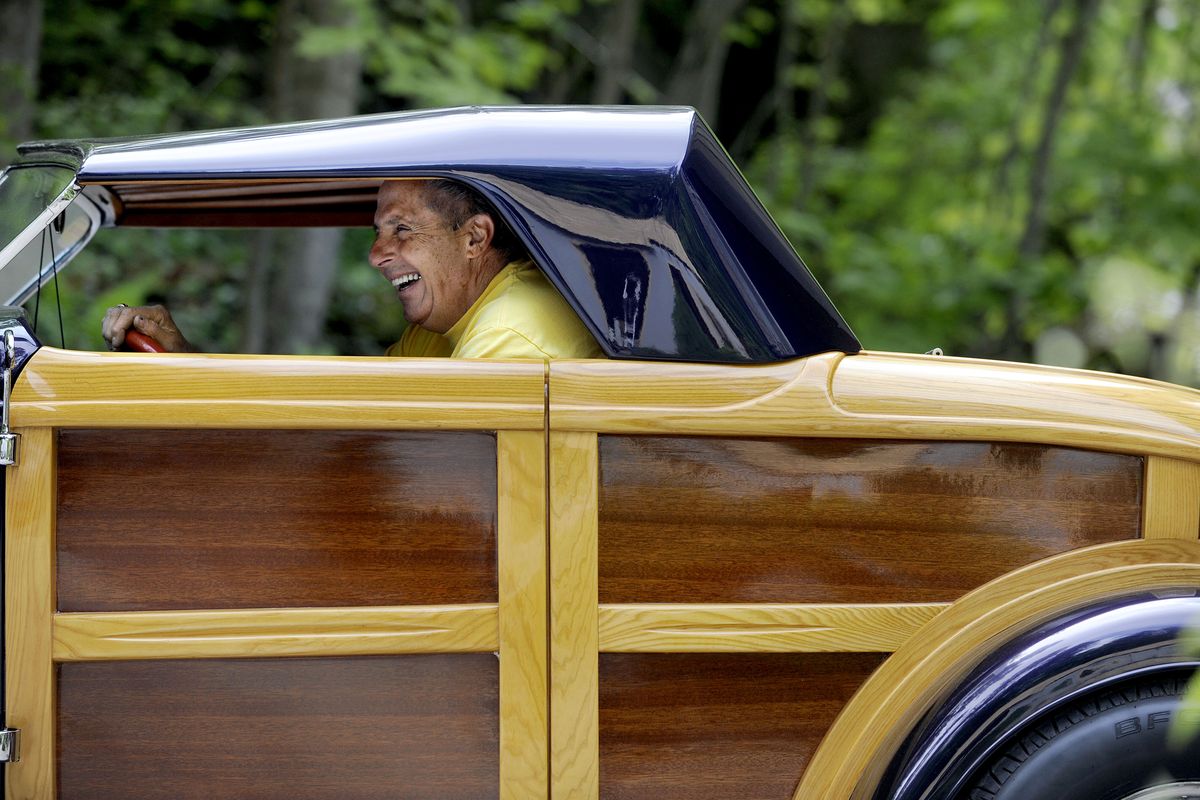Audel’s reputation grows with the details

Some people have a brush with fame.
Don Audel’s brush was his ticket to fame.
Audel began pinstriping cars when he was 14. Within a year, he earned more during his lunch break than his high-school teachers made all day.
Audel’s career path followed his passion. After three detours to different colleges, he worked his way up to art director at American Sign & Indicator. He left there to become art director for Expo ’74, and afterward joined R.A. Hanson Co. as art director.
All the while, Audel spent nights and weekends striping and lettering race cars and cultivating a reputation among car dealers, body shops and fellow hot rod enthusiasts.
Once he went full time, Audel had customers coming from almost every state.
After almost six decades of striping everything from Duesenbergs to dragsters, he now focuses his artistic eye on building custom cars and elegant wooden canoes, watercolor painting and the occasional pinstriping commission that piques his interest.
Audel discussed his career during a recent interview.
S-R: How far back does the art of pinstriping go?
Audel: It was on the chariots, so it’s been around forever. A fellow in California named Von Dutch made it popular with hot rodders in the early ’50s.
S-R: When did you start brush pinstriping?
Audel: In 1954. When I was 15 or 16 years old, I did (Seattle country singer) Bonnie Guitar’s Ford convertible.
S-R: How did she hear about you?
Audel: She saw my work at the Portland Roadster Show.
S-R: Where did you learn pinstriping?
Audel: After the Second World War, you couldn’t get bicycles. So Columbia Cycle would buy used bikes and refurbish them. There was an old guy there pinstriping them, and he was terrible. I knew I could do better than that – I’ve always been an artist. So I watched what he was doing. And I learned a lot from an old hot rodder named Steve Pick who lived across the street. But mostly I was self-taught.
S-R: Did you have any formal art education?
Audel: I went to the Minnesota School of Fine Arts, WSU and Eastern Washington State College. But I never got a degree. I don’t think a degree is important for art. Either you have (what it takes) or you don’t.
S-R: For years, you worked as art director for large companies. What made you decide to pursue pinstriping full time?
Audel: My mother’s boyfriend was a union negotiator, and he always told me I was just making money for other guys – that I should start my own business. My first day pinstriping, I made $200 less than I made in a month at American Sign.
S-R: What distinguishes you from other pinstripers?
Audel: I work a little tighter than most – more precise. And I feel out what the customer is after. Some pinstripers are very good, but they do what they want, which isn’t necessarily what their customer wants.
S-R: Looking back, how would you characterize your career?
Audel: I consider myself like Joe Namath. I was one of the best in my day – from the ’70s through the ’90s – but that doesn’t mean there aren’t some young guys out there now who are every bit as good.
S-R: Do you sign your work?
Audel: Normally I sign a car “Audel of Course!” I get a lot of requests from hot rodders for something more off color – especially from women, for some reason.
S-R: What do you like most about striping?
Audel: Being able to express myself.
S-R: What do you like least?
Audel: The pressure of having to finish a job because I’m already booked up tomorrow. I averaged about 1,000 jobs a year and made a lot of money. But it was hard on my family.
S-R: What makes a good brush pinstriper?
Audel: A steady hand, and knowing what colors and designs work with personalities. But you can’t just be an artist. You have to love cars. I have something like 19, and they’re all very designed – a 1960 Cadillac convertible, a ’63 Thunderbird. Where other people see cars as transportation, to me they’re sculptures.
S-R: Besides cars and trucks, what have you pinstriped over the years?
Audel: Helicopters, gun stocks, boats, and Trail Wagon vans in Yakima – lots and lots of vans.
S-R: How much did you charge?
Audel: Anywhere from nothing, as a favor, to several thousand dollars. Where I made my living was mostly doing new cars. For instance, I used to do 13 cars in a day for Dave Smith (Motors), at $200 each. An average pickup ran $250.
S-R: Has technology hurt demand for pinstriping?
Audel: Technology has taken it all over. When I was painting signs during the heyday, I was only limited by how much time a customer wanted me to put into a job. Today everything is done with photographs and vinyl, and in two hours they can do a fabulous job. Sign painting with a brush is obsolete.
S-R: And you’ve cut back?
Audel: The only cars I stripe now are for old customers from out of town. Last year I did a car for a guy from Oklahoma who always wanted a Don Audel pinstripe job. When it means that much to somebody, then I’ll do the job. But I stay away from everyday work. I’m done chasing the dollars.
S-R: What advice would you offer an aspiring artist?
Audel: Don’t do something for a living if you don’t like doing it. Find the thing you like doing most, work hard to be the very best at it, and the money will come.